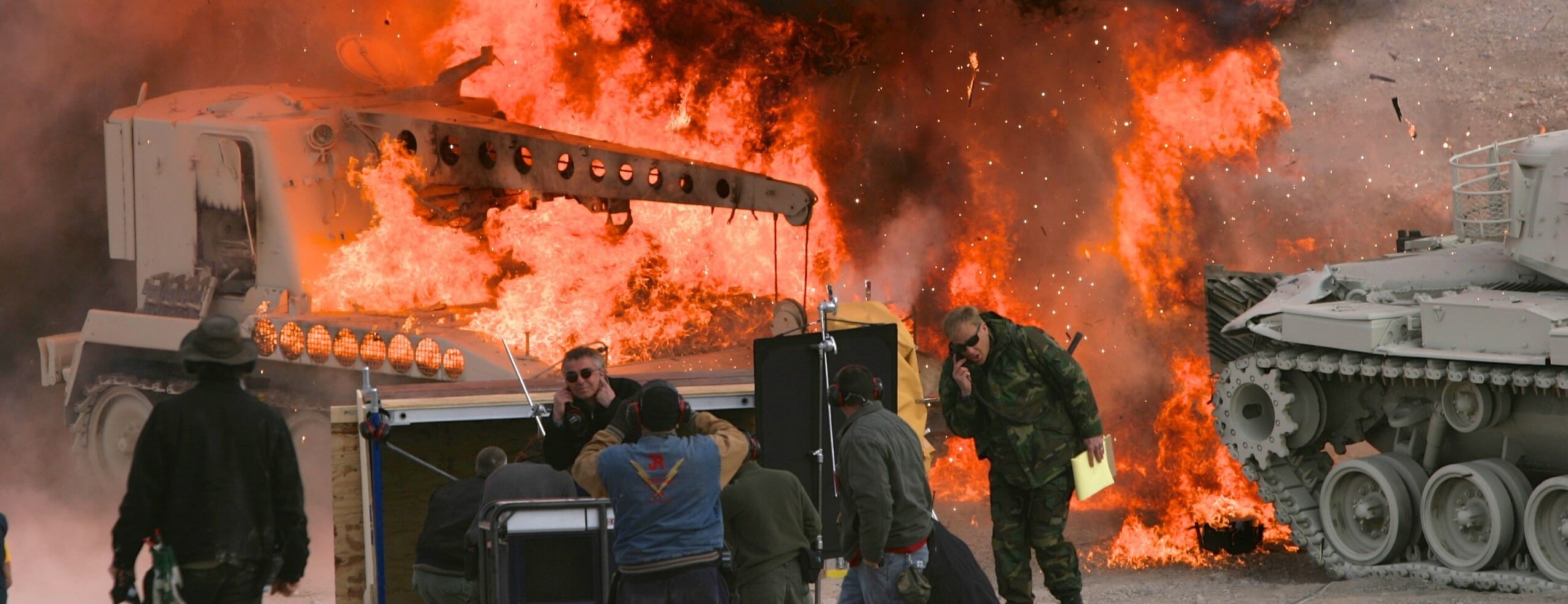Imagine a cross-country road trip in 1953. Three-year-old Stephen Low and his older brother sit in the backseat of the family sedan on the way from their Montreal home to their grandfather's ranch in Alberta.
It's a typical vacation, except that as Eugénie and Colin Low and their two children navigate Northwestern Ontario's twisting roads, their toddler wears a snorkeling mask and flippers.
"My parents would have to let me out every five minutes so I could explore each lake we passed by," Stephen says. "I loved Lake Superior even though it was freezing for a small child."
His fate seemed to be written in the stars, although at that point, Stephen had no way of knowing that he'd become an explorer, a film visionary, and the director of more than 20 acclaimed IMAX movies.
"Stephen is a trailblazer in the giant screen world," says Alex Low, Stephen's younger brother and a talented film producer, writer, and distributor of large-format films. "He's found ways to tell stories in a very visual and a very challenging medium," he adds.
Stephen with a submersible that he will using on an upcoming IMAX film project.
Stephen was made a Member of The Academy of Motion Picture Arts and Sciences (otherwise known as the Oscars) for his exceptional accomplishments in theatrical motion pictures and is an Honorary Member of the Director's Guild of Canada. He's also received a Lifetime Achievement Kodak Vision Award from the Large Format Cinema Association, as well as many other awards, including a 2005 Alumni Honour Award and a 2023 Honorary Doctor of Letters from Lakehead University.
But this story really begins with Stephen's instinctive attraction to the things he's most scared of.
"I've always been drawn to high-risk exploring," he says. "On my grandfather's farm, my friends and I would go into grain silos and pretend that we were travelling to the moon or the bottom of the ocean."
A Family of Filmmakers
Movies are in Stephen's blood. His father Colin Low was a pioneering Canadian documentary filmmaker with the National Film Board of Canada (NFB) and an IMAX film innovator. Often called the "Gentleman Genius," his work influenced directors such as Ken Burns and Stanley Kubrick.
Stephen and his father had a close relationship and, as a youngster, Stephen spent a lot of time on the sets of his father's stop-frame documentary movies.
"Creating the special effects was painstaking, which meant hundreds of hours of boredom for me," Stephen says. "But I was fascinated by the real people my father got to meet—gold miners, cowboys, Hutterites."
The slowness of the filmmaking process initially made Stephen reject the idea of becoming a filmmaker himself. Instead, he chose to study political science at Lakehead University.
"Political science and philosophy are incredibly important. They focus on understanding fundamental human relations because we still don't understand ourselves—we go to war instead of solving our problems."
It was the annual road trips to see his grandfather that steered Stephen to Lakehead.
"I hated cities, but I loved Thunder Bay—all the industries in the city were very visual. You could watch ships being unloaded and trains being marshalled in huge yards. And if you look at a map, Lakehead is one of the most remote universities in Canada. I wanted to explore Lake Superior and ski, swim, sail, and learn to scuba dive, which I did."
"And for the first time," Stephen continues, "I got teachers that I could debate with like I'd always done with my father at the dinner table. Lakehead freed me from the dogma of high school and was a great launching pad."
"I remember Stephen coming home from university on the train one winter," Alex says. "It was during a snowstorm, so we had to take a toboggan to pick him and his luggage up at the station."
Trains, in fact, are a longstanding obsession of Stephen's—and one that he was able to pursue while a Lakehead student. He worked as a brakeman for the Canadian Pacific Railway (CPR) in the summers, as well as after receiving his degree in 1974. During his post-Lakehead period, he also helped build housing in First Nations communities across Northern Ontario and Manitoba while contemplating what he wanted to do with his life.
 Eight-year-old Stephen is entranced by a locomotive in southern Alberta. Photo Credit: Colin Low
Eight-year-old Stephen is entranced by a locomotive in southern Alberta. Photo Credit: Colin Low
Bo Derek and the Killer Whale
When he was 24, the pull of cinema became too strong for Stephen to resist. He hitchhiked to Newfoundland and found work on the 1977 Hollywood film Orca the Killer Whale—a Jaws-inspired thriller.
"They needed a scuba diver to work with full-size hydraulic whales. Each whale could do a different thing—like move laterally or clap their flippers. I positioned them in the water and moved them around. It was very cold work, especially since I didn't have a proper drysuit, just my worn-out wetsuit."
He also had a second job bringing actors to the filming location. "Bo Derek was one of the people I drove around."
The actress, who was 20 at the time, played a fishing boat crew member whose leg is bitten off by a vengeful killer whale.
"She wasn't famous then, she was just another gal on the set," Stephen says of the woman who would become an international sex symbol in the 1980s. "Her husband John Derek followed her around everywhere in a motorhome. I had to drive slowly enough so that he could keep up with us—he didn't let her out of his sight."
Not long after Orca, Stephen found work as a driver and a movie stills photographer on director Terrence Malick's 1978 masterpiece Days of Heaven where future Hollywood stars Brooke Adams, Richard Gere, and Sam Shepherd got their big break.
"One night, I found myself having beers with the three of them in a dive bar in Lethbridge, Alberta," Stephen recalls.
Gradually, though, Stephen realized that documentary filmmakers have more control over their movies, and they don't have to deal with Hollywood-sized egos.
"Documentary filmmaking became my ticket into any part of the world that I wanted to go—plane cockpits, trains, submarines. I gravitated to IMAX because, like my dad's films, it made heroes out of real people. They also make something that is rare, possible: theatrical non-fiction movies projected on a giant screen."
Stephen's golden opportunity as a filmmaker came after IMAX co-creator Roman Kroiter produced Stephen's first film, created for the NFB, about the development of Canada's Challenger jet. Kroiter was so impressed that he asked Stephen to direct an IMAX movie about birds, called Skyward, for Japan's 1985 world fair.
In one of his many IMAX innovations, Stephen trained Canada geese to fly beside speed boats and filmed them using ultralight planes.
"Led by naturalist Bill Carrick, we were the first production to film birds like that, and it helped cement my filmmaking reputation," Stephen says.
The success of Skyward prompted a Japanese power company to ask Stephen to make a film about nuclear energy, but Stephen had other ideas.
"I convinced them that an IMAX film about the life of a family of beavers would be much more interesting for families touring their new IMAX visitors' centre. It's a miracle the company bought that argument. Beavers is still playing there to this day."
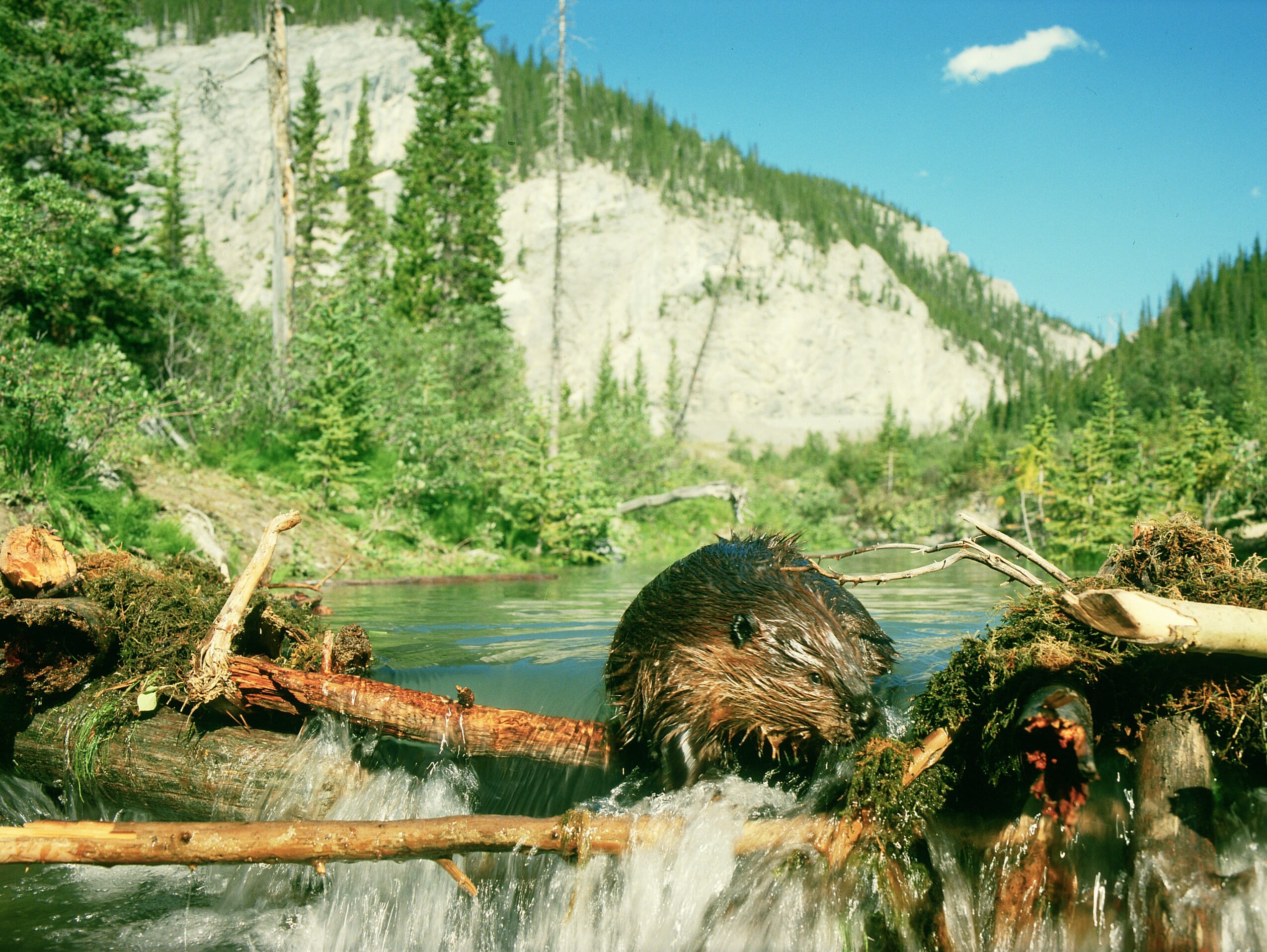
"Because IMAX's wide-angle lens camera has no depth of field, you can't magnify things very much," Stephen says, "so when we made Beavers, we needed the animals to come to us. We got the beavers to build a dam by starting to cut down trees and then they joined us."
Once they had everything in place, Stephen and his crew headed off into the forest in Kananaskis, Alberta, with giant lights and cameras so huge, four people were needed to carry just one.
"He's got this warrior thing that directors have," says Pietro Serapiglia, Stephen's producer, vice-president, and manager of distribution. "If he wants a shot, he will demand that we go out and make it happen—like getting a 200-foot construction crane to Kananaskis by five in the morning to film beavers. And we want to do it because we know that it will make the film incredible."
"Beavers allowed people to get close to animals in a way that had never been done before," Alex says. "It started a whole industry in the sense that it proved that you could do IMAX natural history films, despite the cumbersome cameras."
Stephen says that the movie was helped by the fact that the hand-reared beavers ignored the cameras, even when they were an inch away from them. "They were highly social animals who liked having humans around."
Beavers set records as the most popular Canadian film ever made and spurred the building of IMAX theatres around the world. It also convinced the Rolling Stones that they wanted to be featured in an IMAX concert film.
"Mick Jagger saw Beavers and loved it," Pietro says. "He said, 'If Stephen can make those critters look that good, he'll make me look fantastic!'"
"Mick asked me at dinner, 'Which are you, Steve? A Beatles guy or a Rolling Stones guy? I thought he was kidding so I said, 'Beatles.' He wasn't joking. But he was correct to ask me. If you aren't passionate about something, don't do it, was his message. I've never done a film I wasn't nuts about."
Ultimately, Stephen ended up leaving the project to work on his 1992 IMAX film Titanica.
Descent to the Titanic
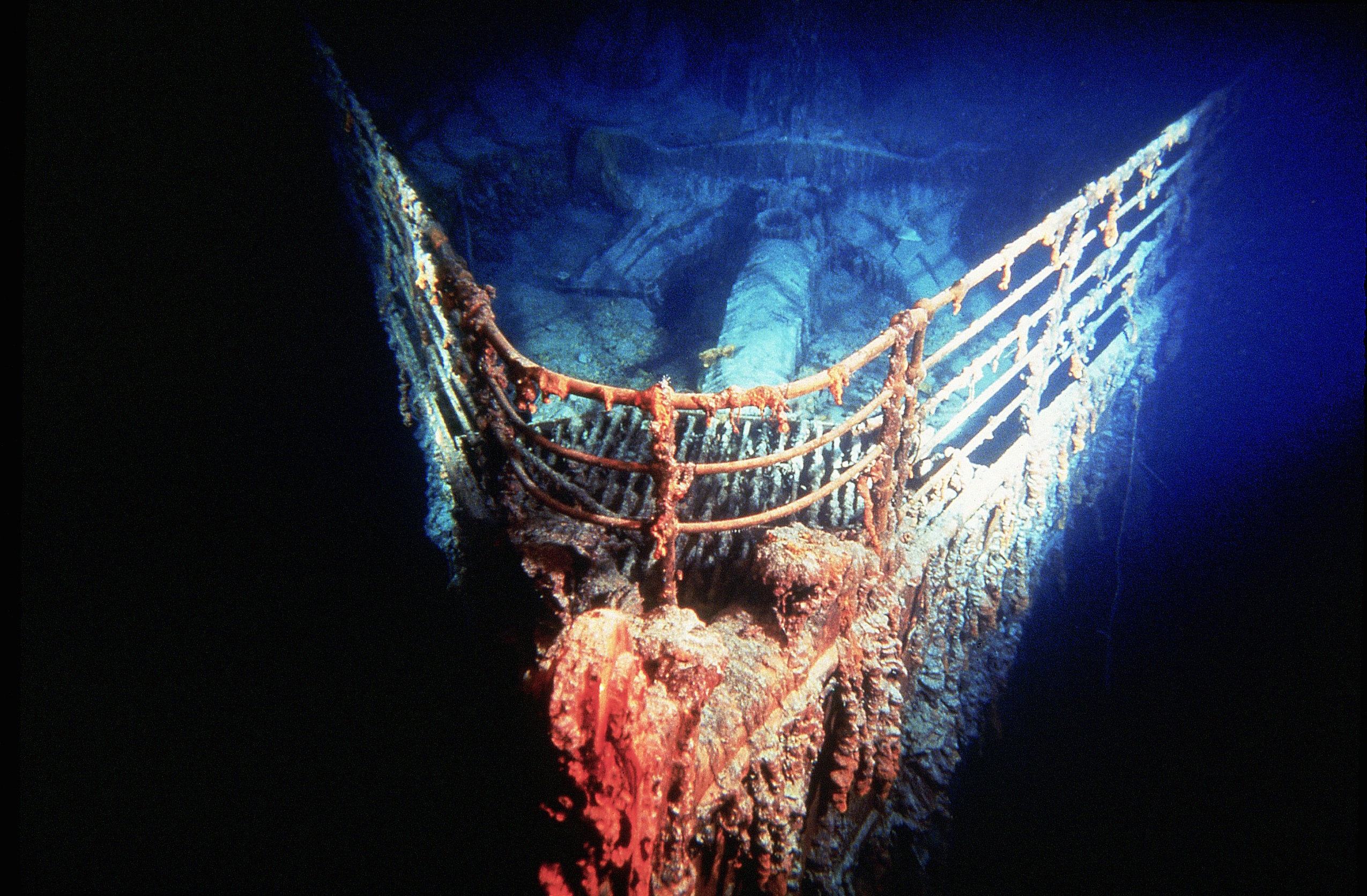 Stephen needed two submersibles to create his film Titanica. One submersible was used to shoot the footage and one was used to light the wreck, which was an area the size of a football field.
Stephen needed two submersibles to create his film Titanica. One submersible was used to shoot the footage and one was used to light the wreck, which was an area the size of a football field.
Titanica began in 1985 after oceanographer Bob Ballard and a joint French-American expedition discovered the wreckage of the Titanic ocean liner. The ship had been lost since 1912 when it struck an iceberg, killing at least 1,500 passengers and crew members.
"Bob was planning to go out again with Alvin, an American submersible, to visit the ship and I convinced him to make it an IMAX film," Stephen says. "But after fitting the IMAX camera in Alvin, I decided there wouldn't be enough power and light. We eventually went to the Russians who had two new subs with vastly more power to run big lights."
"It had different kinds of impossible to it," Alex explains. "It was near the end of the Cold War, and we had Russians, Americans, and Canadians collaborating to take IMAX cameras two-and-a-half miles down to the bottom of the Atlantic."
Bringing giant cameras to the ocean floor wasn't the only logistical problem.
"It's such a dangerous wreck and the opportunity to kill yourself is unlimited," Stephen says. "The ship is rotting and covered in a great tangle of iron cables that once secured the smokestacks and masts."
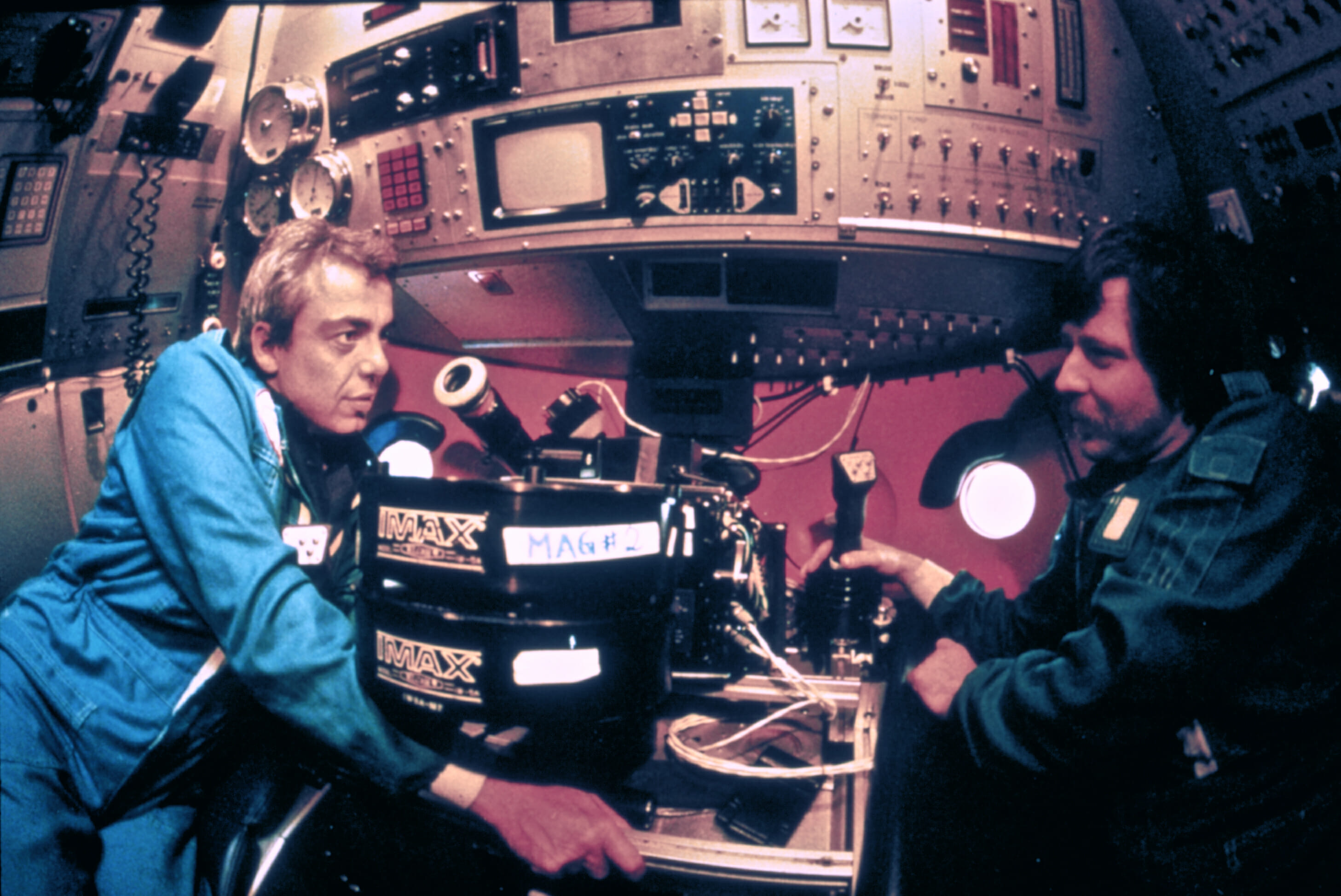
Stephen inside a Mir deep-sea submersible with Russian pilot Evgeny "Genya" Cherniev. "We did 20-hour dives in the submersible and the air would get really foul," Stephen recalls.
Stephen was trapped on the Titanic several times during filming—including almost four hours in the ship's engine room after one of the runners underneath his submersible caught on a cable. "The pilot had to back up extremely carefully multiple times in case the cable pulled the ship down on top of us," Stephen says.
The completed movie alternates between the story of the scientists using submersibles to explore the wreck and an interview with Titanic survivor Eva Hart who was just seven years old when she lost her entire family in the tragedy. Among the people invited to the film's premiere in 1992 was Hollywood director James Cameron and, after viewing it, he was inspired to make the movie Titanic starring Kate Winslet and Leonardo DiCaprio.
Uncovering the Wonders of the Universe
Titanica also gave birth to another undersea film—Stephen's spectacular 2003 movie Volcanoes of the Deep Sea about the discovery of hydrothermal vents in the Atlantic. "We did some dives with the Russian research scientists on the way to the Titanic and they showed us these giant mountains seething with tube worms, which really captured my imagination," Stephen says.
He's now working on a film about how microbial larvae from these ocean volcanoes travel around the world looking for new thermal vents.
"These are the biggest migrations in the world," Stephen says. "Even after 200 years, humans aren't the masters and commanders of the ocean, it's these tiny living submarines."
Stephen's adventures extend well beyond the nautical realm. His body of work encompasses movies about F15 fighter jets, Indy 500 cars, aircraft carriers, the Large Hadron Collider particle accelerator, and Mark Twain. The film he's most proud of, however, is Rocky Mountain Express—the tale of a restored steam engine that runs along the Canadian Pacific Railway.
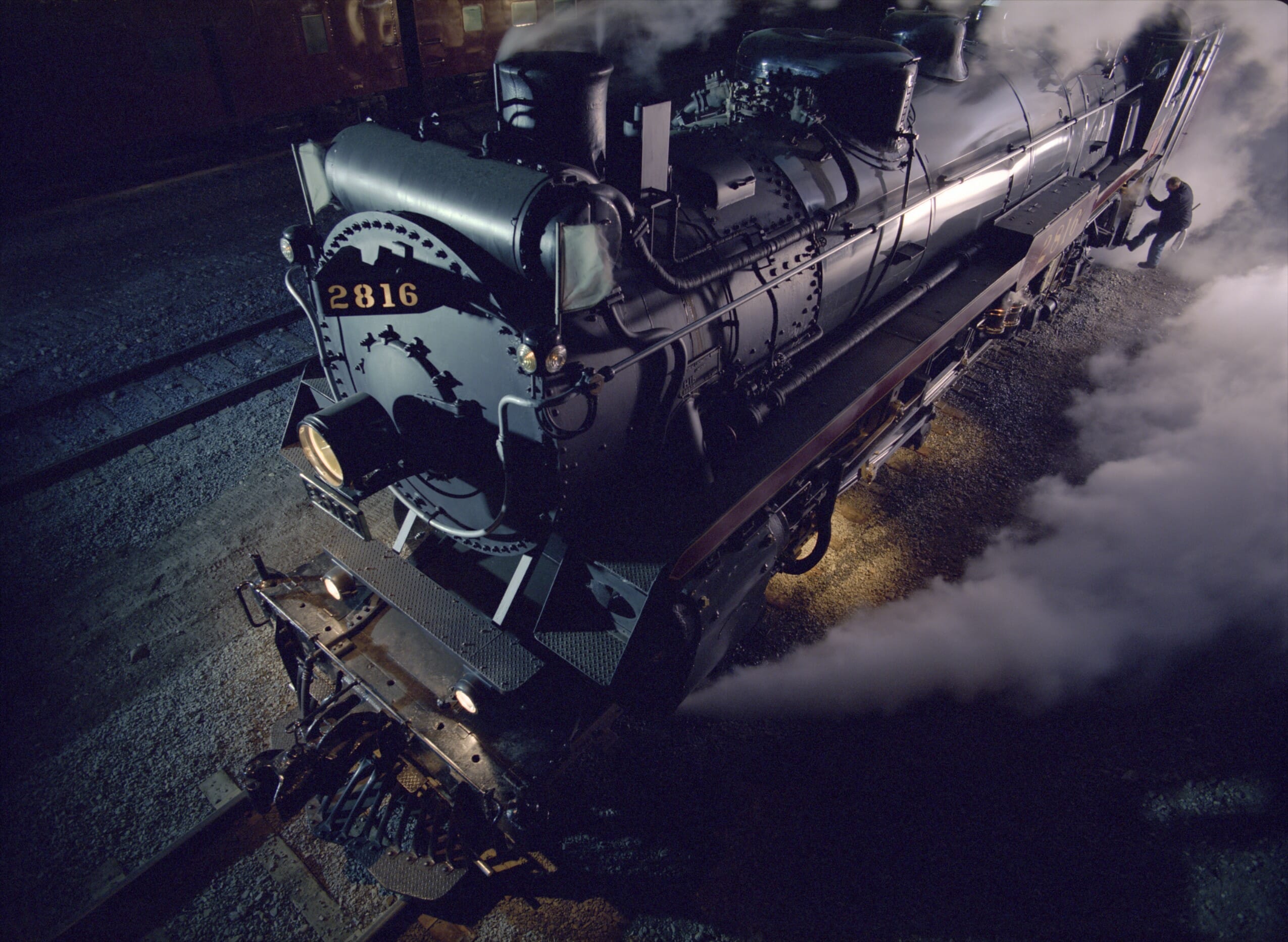
"Stephen has risked his life to get shots—like being in a helicopter flying extremely close to a moving train—so that people could see things they would never have otherwise seen," says Stephen's producer Pietro Serapiglia.
"The building of the CPR is a simple yet profound story," Stephen says. "Although it was almost impossible to construct and killed many men, this transcontinental railway was crucial to Canada's success or failure as a country. If it hadn't been built, the Americans would have taken British Columbia."
Stephen's sweeping vision and ability to mesmerize, delight, and tell us truths about our world makes him a master storyteller.
"His filmmaking contributions are immense," Pietro says. "People like Tom Cruise and the directors Christopher Nolan and James Cameron admire Stephen's work—and millions upon millions have seen his movies."
Click here to watch the trailer for Rocky Mountain Express and visit Stephen's website to find out where you can watch his movies: https://www.stephenlow.com/where-to-see-it/


